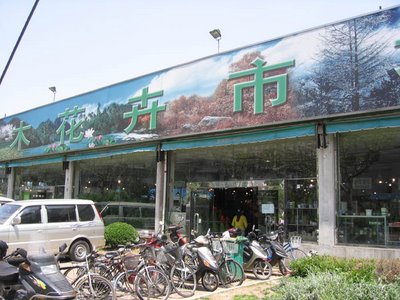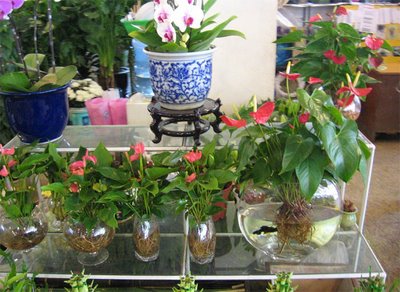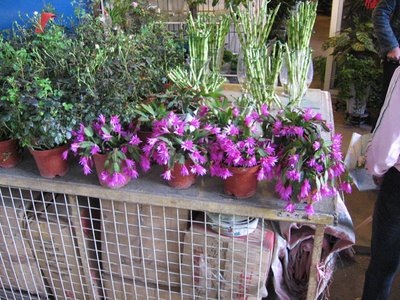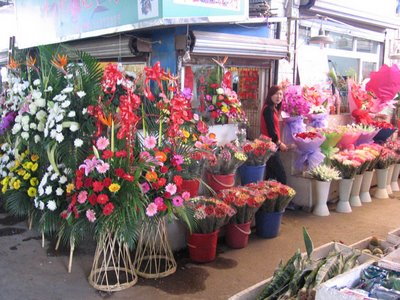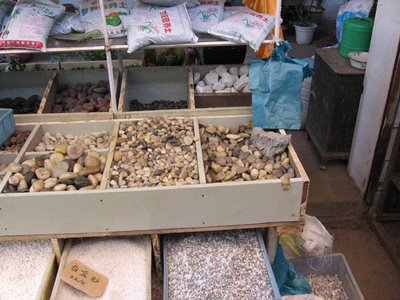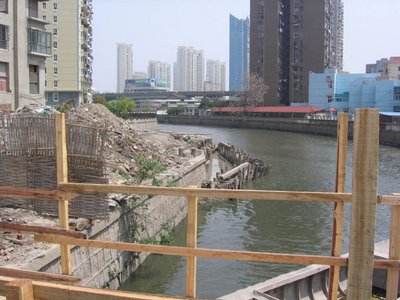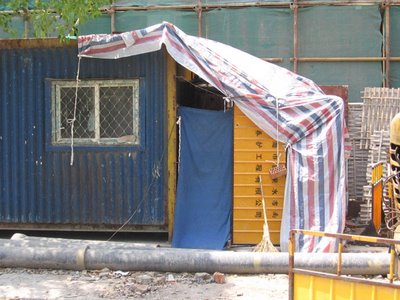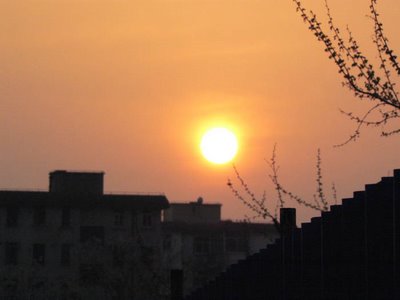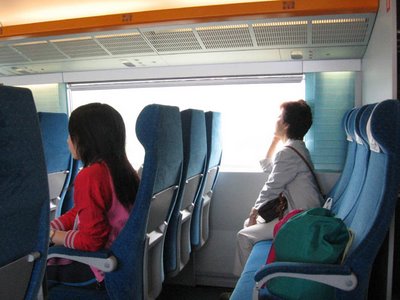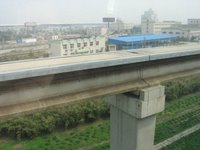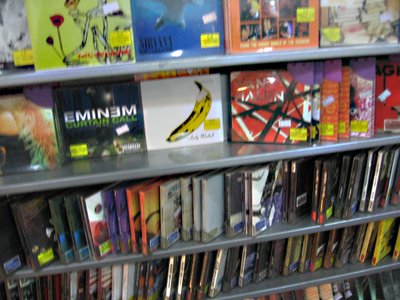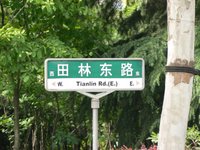 I've mentioned Tianlin Street a few times recently, it's a shopping street near my apartment. I can't claim that it's a tourist highlight of Shanghai, and there's nothing especially amazing or unique to the street. At the same time, there's always something interesting to see, and in a low-key way it exemplifies the busy bustle I enjoy about Shanghai.
I've mentioned Tianlin Street a few times recently, it's a shopping street near my apartment. I can't claim that it's a tourist highlight of Shanghai, and there's nothing especially amazing or unique to the street. At the same time, there's always something interesting to see, and in a low-key way it exemplifies the busy bustle I enjoy about Shanghai. This update will be mostly the form of a picture diary, showing what you can see on a ten or fifteen minute walk along a stretc of the road. I took these pictures today, the day before International Labor Day's week long holiday. Even though it's a Sunday, it's still considered a "Work Day" - with longer holidays in China, work days are often jumbled around, people work the weekend and then get the rest of the week off. So it's not nearly as busy as it would be on a normal Sunday - or it will be on Labor Day, I'd imagine.
The walk starts with a small park. Like a lot of small parks it's well manicured, but you aren't allowed to walk off the pathways. This Eagle statue strikes me - how does it look like anything besides Americana?

It's just across the street that they have several illicit massage parlors. Particularly naive readers may be startled to find that massage parlors can be fronts for prostitution. Girls in miniskirts will sit around, bored. Sometimes they'll motion for you to come inside. Probably the most common front is barber shops. That doesn't mean every barber shop is a front - of course there's huge amounts of legitimate barber shops and massage parlors. The naughty places will often have pink lights. It's not like Amsterdam, but really it's nothing subtle. Beauticians and Karaoke joints are also common fronts.

A lot of shops along this stretch occupy the first floor to larger apartment buildings. It must be said, some of these apartment buildings are about as ugly as any you'll see in Shanghai:
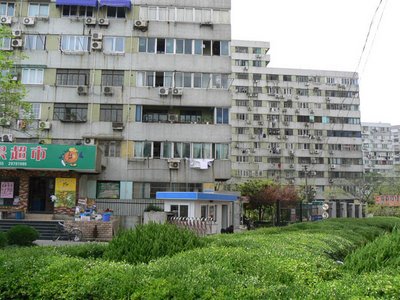
Street traffic is mostly bikes, motorcycles, and mopeds, although there's also a fair share of taxis, busses, and private cars. It's a little chaotic and you occasionally see small accidents, such as this electric bike rider, who ran into the cart rider. The cart got knocked over and so they yelled at each other, and the cart rider hit the bike a few times.

 There's a few restaurants around this area. This one is on my short list of places to go - it's a Muslim restaurant. Muslim restaurants are pretty common to Shanghai, especially around the area I live. A lot of them aren't much more than shacks, although this one looks pretty nice. And perhaps a more proper name would be Xinjiang restaurants - it's a majority-Muslim area in Northwestern China. There's also this Shanghai-style diner, across the street:
There's a few restaurants around this area. This one is on my short list of places to go - it's a Muslim restaurant. Muslim restaurants are pretty common to Shanghai, especially around the area I live. A lot of them aren't much more than shacks, although this one looks pretty nice. And perhaps a more proper name would be Xinjiang restaurants - it's a majority-Muslim area in Northwestern China. There's also this Shanghai-style diner, across the street:
It looked like an OK place and it seems to be popular, but I'd have to recommend against it. The Xiaolongbao I ordered there, if edible, were still the worst I've gotten in Shanghai:

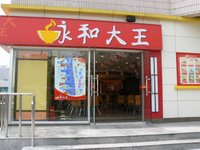 Just a little down the street, on a busy corner, is a Yong He Da Wang, a fast food chain restaurant. I think they're pretty good - everybody tells me they're actually terrible, but they're all over Shanghai and they're always busy. Maybe there's the same psychology as with McDonald's, in the US. Anyway, whenever you go it seems half the people are snacking on oil rolls with sweet Soy Milk:
Just a little down the street, on a busy corner, is a Yong He Da Wang, a fast food chain restaurant. I think they're pretty good - everybody tells me they're actually terrible, but they're all over Shanghai and they're always busy. Maybe there's the same psychology as with McDonald's, in the US. Anyway, whenever you go it seems half the people are snacking on oil rolls with sweet Soy Milk: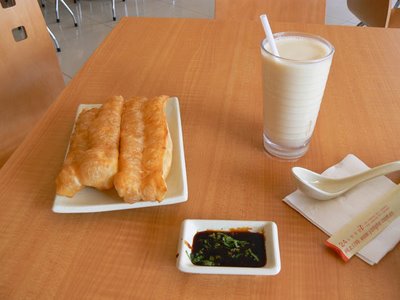
Apartment buildings are often built off the main street, and the side-roads can contain either small parks, or in this case, a row of small restaurants and stands selling snack foods:
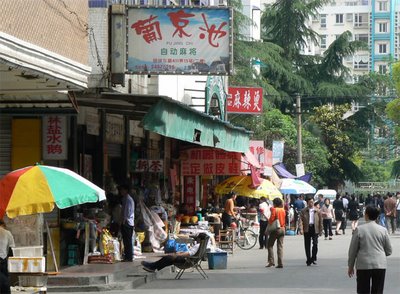
On this street corner, coffee is sold from this van, which will stay parked here all day. It sells sweet coffee drinks and the like - Starbuck's are relatively common to Shanghai, but they're more expensive than in the US, which is a little crazy by local pricing standards.

There's too many pictures for one update, so I'll finish the bunch in the next couple of days, stay tuned!
